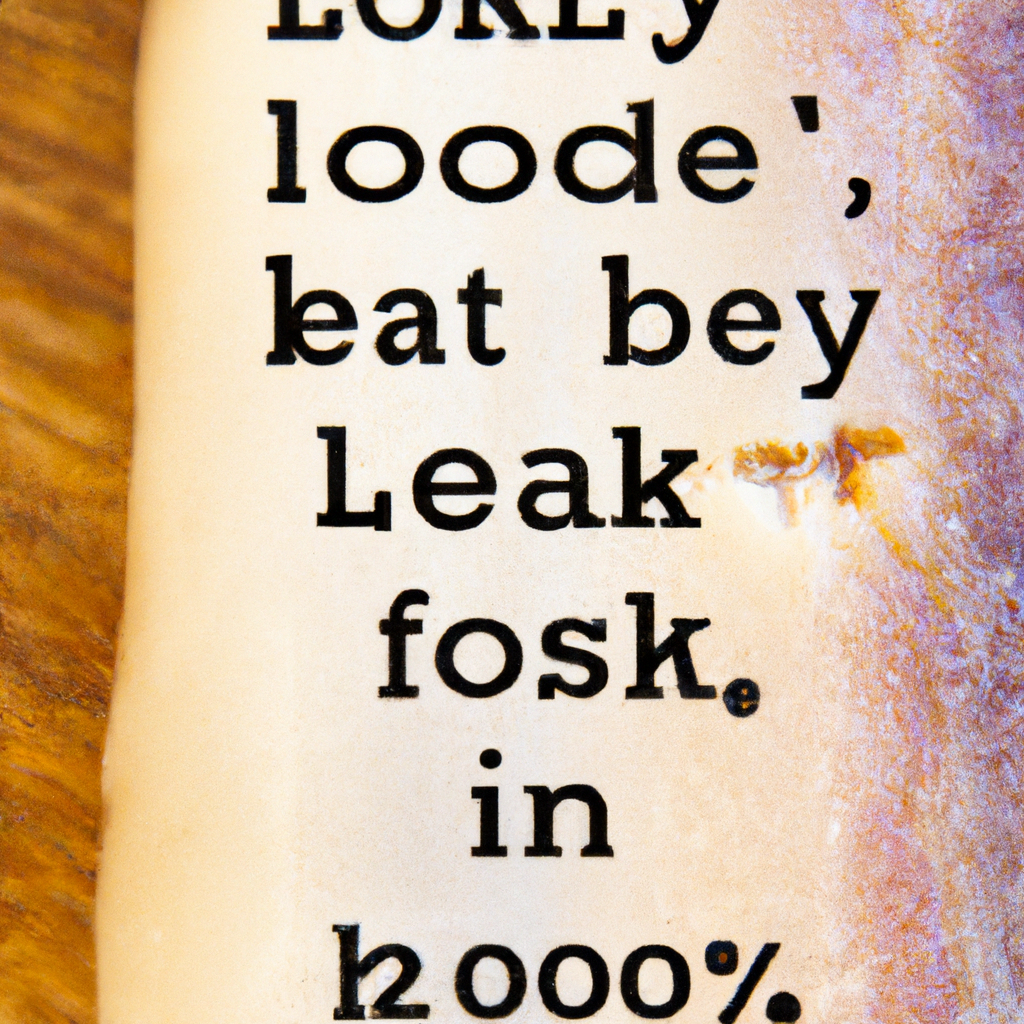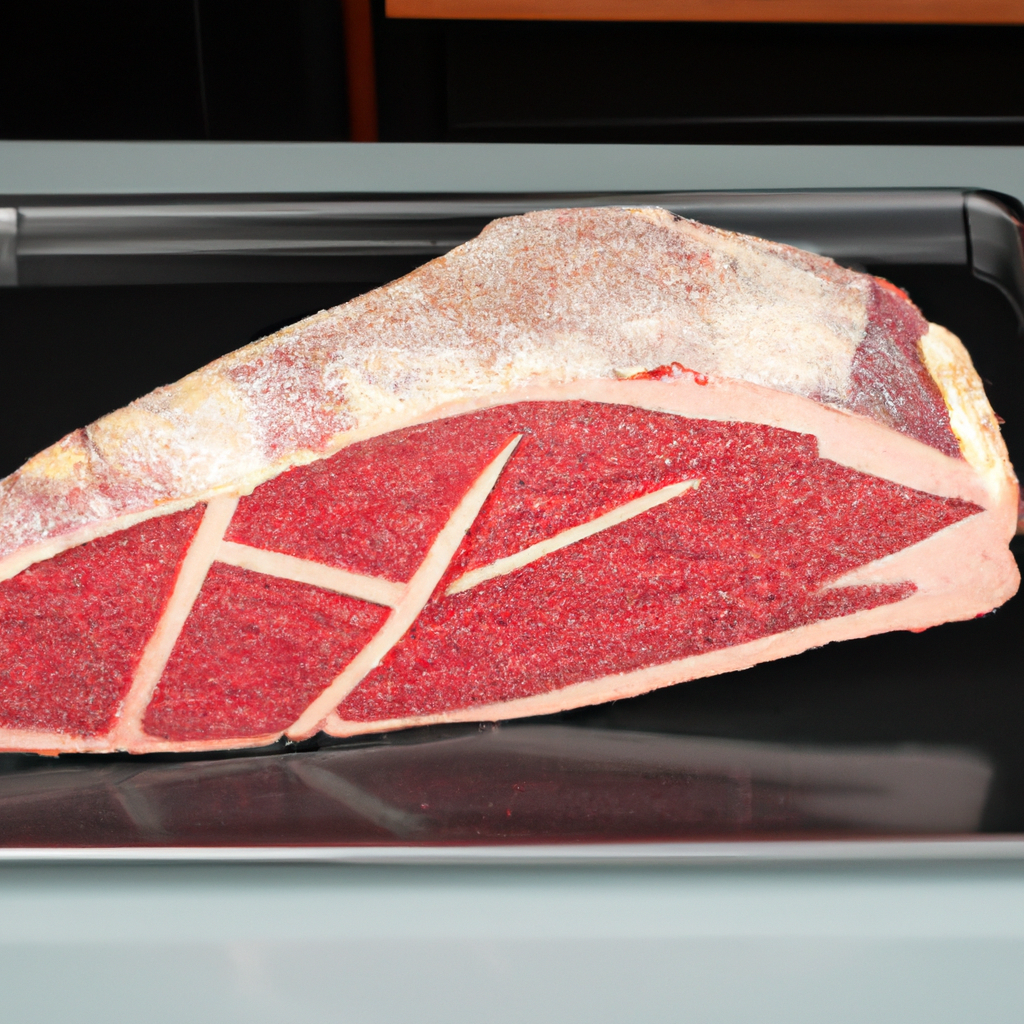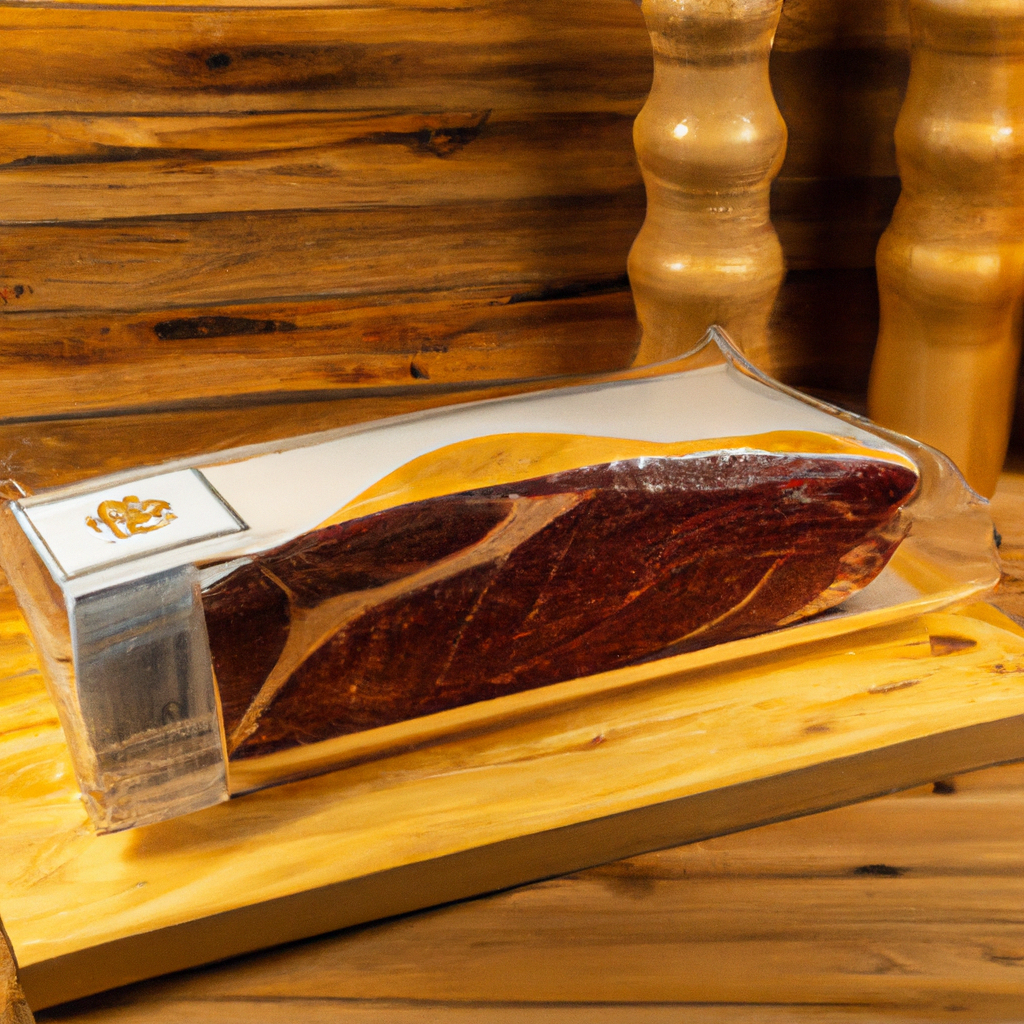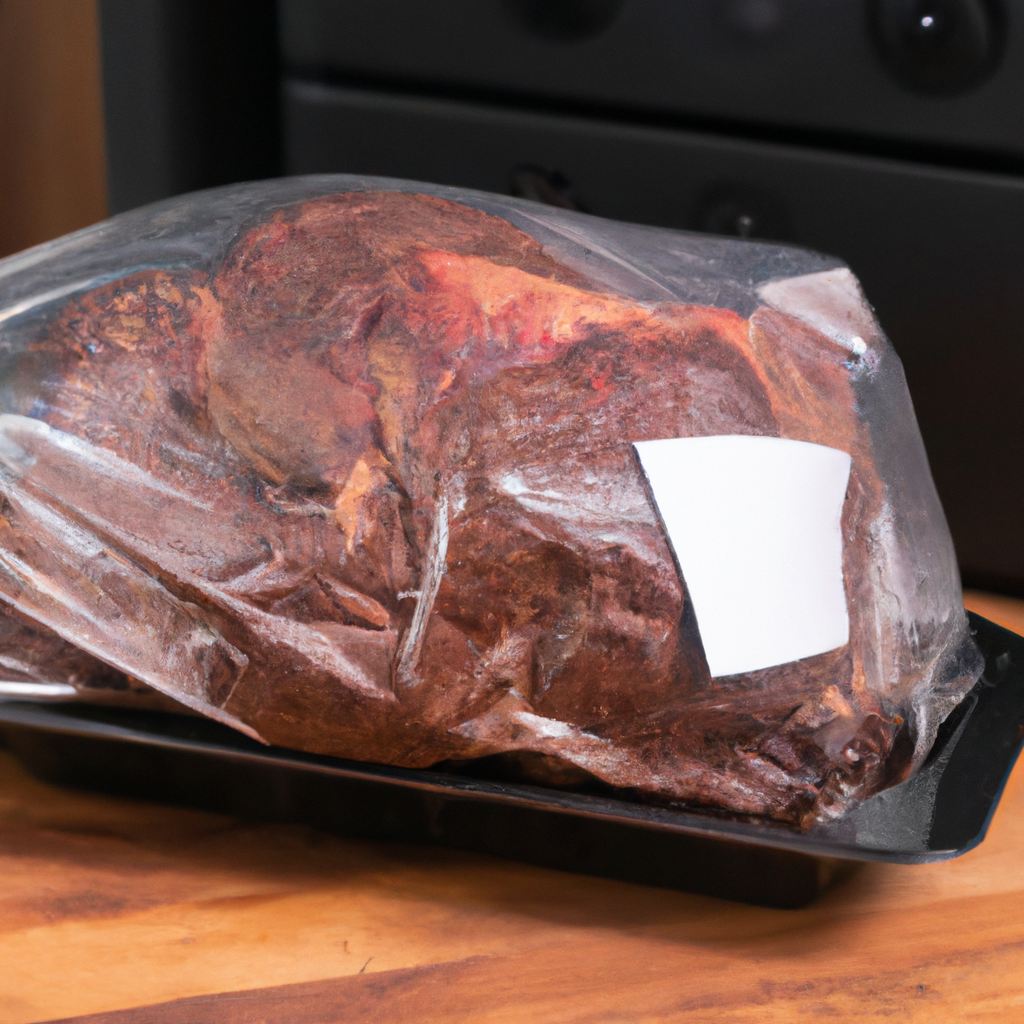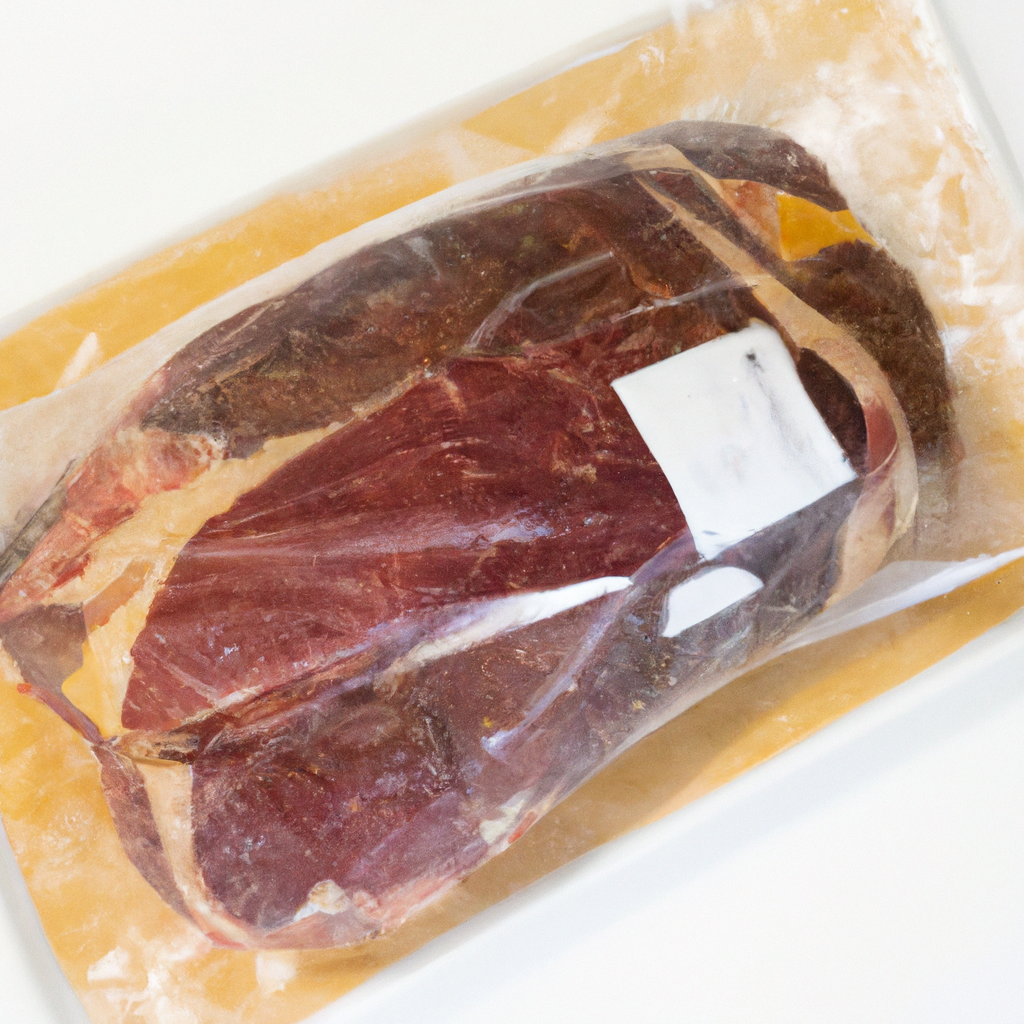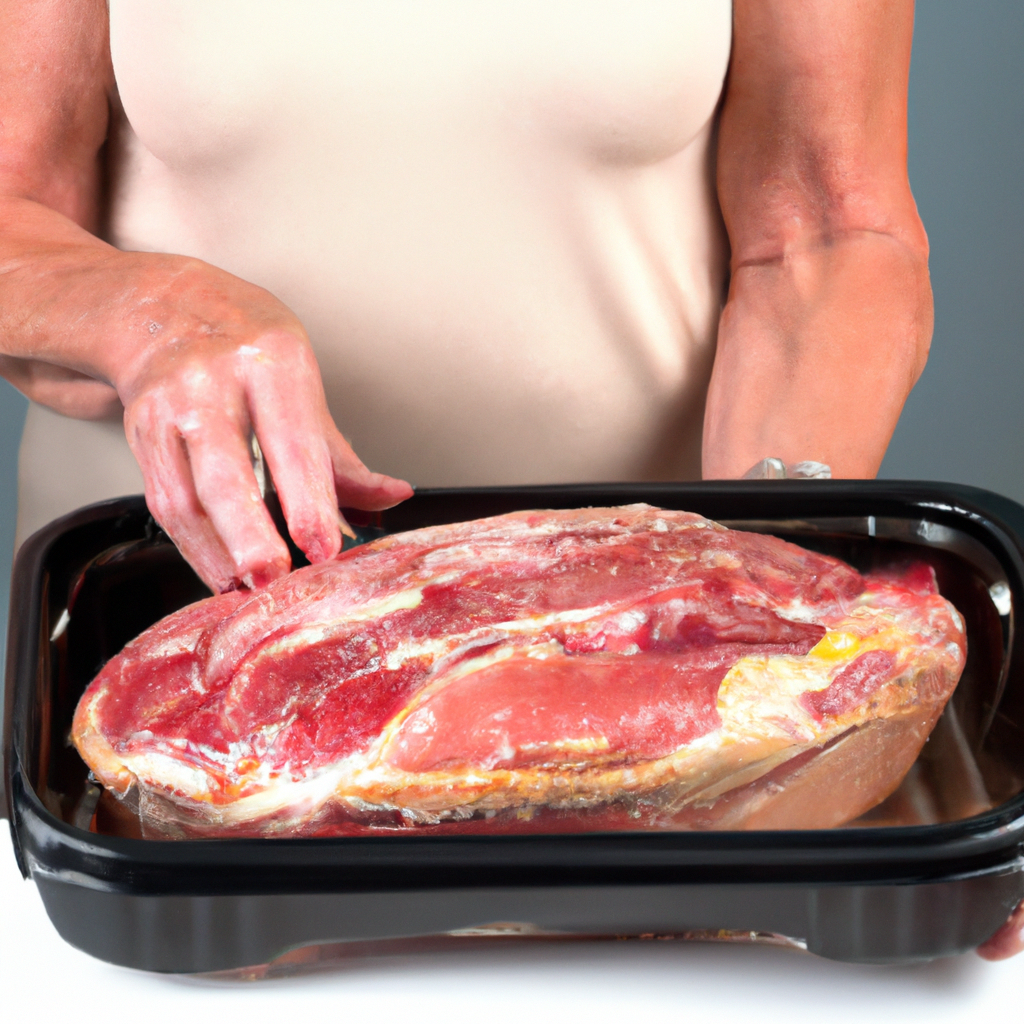The tantalizing aroma of a perfectly roasted beef fills the air, setting your taste buds ablaze and leaving you salivating in anticipation. As you savor each tender slice, you can’t help but wonder, how long can this culinary masterpiece be savored? Let’s embark on a delicious journey to uncover the secrets of the roast beef’s lifespan once it has graced our plate. Here, we will delve into the realms of time and taste, unveiling the truth behind how long cooked roast beef can retain its prime flavor and remain a delectable delight. So, buckle up and prepare to unravel the mystery that lies within the realm of culinary longevity.
Table of Contents
- Determining the Shelf Life of Cooked Roast Beef
- Factors Affecting the Shelf Life of Cooked Roast Beef
- Recommended Storage Practices for Cooked Roast Beef
- Signs of Spoilage in Cooked Roast Beef
- How to Safely Reheat Leftover Roast Beef
- Guidelines for Freezing Cooked Roast Beef
- Best Practices for Handling and Storing Cooked Roast Beef
- Q&A
- The Conclusion
Determining the Shelf Life of Cooked Roast Beef
Are you curious about how long your perfectly cooked roast beef can last? Well, fret not, as we unveil the secrets behind determining its delightful shelf life. Whether you’re planning a sumptuous family feast or looking to savor the leftovers, understanding how long your cooked roast beef stays fresh is essential.
1. Storage Methods:
- Refrigeration: Placing your cooked roast beef in an airtight container or wrapping it tightly with foil will help maintain its flavor and moisture. Store it in the refrigerator at or below 40°F (4°C).
- Freezing: If you plan to keep your roast beef for longer, freezing is your best option. Wrap it tightly in freezer-safe bags or heavy-duty aluminum foil before placing it in the freezer.
2. Shelf Life Guidelines:
- Fresh Refrigerated Roast Beef: Enjoy your deliciously tender roast beef within 3-4 days of cooking when stored in the refrigerator.
- Frozen Roast Beef: When stored at 0°F (-18°C) or below, your cooked roast beef can typically be enjoyed for up to 3-4 months without losing its quality.
Remember, these guidelines are just helpful pointers to ensure your safety and savor the best flavors of your cooked roast beef. Always use your judgment, check for any signs of spoilage or unpleasant odors, and discard if in doubt. Happy roasting!
Factors Affecting the Shelf Life of Cooked Roast Beef
When it comes to the shelf life of cooked roast beef, several factors play a key role in determining how long it remains safe to consume. Understanding these factors can help you make informed decisions about storage, handling, and consumption. Below are some of the key factors that influence the shelf life of cooked roast beef:
- Temperature: The temperature at which the cooked roast beef is stored greatly affects its shelf life. Bacteria thrive in warmer temperatures, so it is crucial to store the beef in a refrigerator set at or below 40 degrees Fahrenheit (4 degrees Celsius).
- Packaging: The way the cooked roast beef is packaged can impact its shelf life. It is recommended to store the beef in airtight containers or wrap it in moisture-proof and oxygen-resistant materials, such as plastic wrap or vacuum-sealed bags, to prevent bacterial contamination and extend its freshness.
- Quality of Meat: The quality of the roast beef itself plays a significant role in determining its shelf life. Freshly cooked beef from a trusted source is more likely to have a longer shelf life compared to meat that is already approaching its expiration date or of questionable origin.
It is essential to keep these factors in mind to ensure the longevity and safety of your cooked roast beef. Taking the necessary precautions, such as proper storage and timely consumption, will not only maintain its taste and texture but also prevent the risk of foodborne illnesses. Remember, ensuring the freshness of your cooked roast beef is key to enjoying every delicious bite!
Recommended Storage Practices for Cooked Roast Beef
When it comes to preserving the deliciousness of your cooked roast beef, following proper storage practices is key. By doing so, you can ensure the meat remains tender, juicy, and full of flavor, even after storing it for later use. Here are some handy tips to consider:
- Allow the beef to cool: Before refrigerating or freezing your cooked roast beef, make sure it has cooled down to room temperature. This step helps prevent condensation and bacterial growth.
- Divide into portion sizes: To ensure easy reheating and avoid wastage, consider dividing the roast beef into smaller portion sizes before storage. This way, you can defrost and use only what you need without compromising the entire batch.
- Use airtight containers or wraps: To minimize exposure to air and maintain freshness, place the roast beef in airtight containers or tightly wrap it using high-quality plastic wraps or freezer-safe bags.
- Label and date: Don’t forget to label your storage containers with the date of preparation to keep track of freshness. This practice ensures you consume the roast beef within a safe timeframe.
Remember, how you store your cooked roast beef greatly impacts its quality and longevity. By implementing these recommended storage practices, you’ll be able to savor the delectable flavors of your roast beef even days after it was cooked.
Signs of Spoilage in Cooked Roast Beef
Knowing whether your cooked roast beef has spoiled is essential to ensure food safety and prevent any potential health risks. Here are a few subtle signs to look out for that might indicate spoilage:
- Change in color: Freshly cooked roast beef typically has a rich, brown hue. If your beef has turned gray, greenish, or even has black spots, it might be a sign of spoilage.
- Unpleasant odor: Take a whiff of your roast beef. While a slightly earthy aroma is expected, any foul or pungent smell could suggest spoilage. If it gives off an ammonia-like scent or is particularly offensive, it’s best to steer clear and discard the meat.
- Texture abnormalities: Roast beef should be tender and moist. If you notice a slimy or sticky texture on the surface of your cooked meat, this could indicate bacterial growth and spoilage.
Additionally, always trust your instincts and be cautious when consuming roast beef that has been stored for an extended period or left at room temperature for too long. Remember, spoiled meat may not always exhibit obvious signs, so it’s important to prioritize food safety at all times.
How to Safely Reheat Leftover Roast Beef
Leftover roast beef can be a delicious and convenient meal option, but reheating it improperly can result in a less-than-appetizing experience. To ensure that your leftover roast beef remains juicy, tender, and safe to eat, follow these simple tips:
- Use the oven: While microwaving may seem quick and easy, reheating roast beef in the oven provides better results. Preheat your oven to 350°F (175°C) and place the beef in a baking dish lined with parchment paper. Cover the dish with aluminum foil to prevent it from drying out.
- Give it a bath: To prevent the roast beef from losing moisture, consider giving it a gentle bath before reheating. Pour a small amount of beef broth or au jus over the meat, ensuring it doesn’t get submerged. This will help add moisture and maintain the beef’s succulence.
- Slice it thin: If you’re reheating sliced roast beef, ensure the slices are as thin as possible. Thinner slices heat more evenly, reducing the risk of drying out the beef. It’s best to slice the roast beef against the grain, which helps maintain tenderness.
By following these simple steps, you can enjoy the deliciousness of leftover roast beef without compromising its quality. Remember to always use your best judgment and inspect the meat before consuming it. With a little care and attention, your reheated roast beef will be just as satisfying as the first time around!
Guidelines for Freezing Cooked Roast Beef
So, you’ve just made a delectable roast beef feast, but leftovers are too much to handle? Fear not, for freezing cooked roast beef is a fabulous way to extend its savory goodness and reduce waste. Here are some guidelines to ensure your frozen roast beef retains its flavor and texture:
- Slice it right: Before freezing, carve your roast beef into thin, uniform slices to ensure quick and even freezing as well as convenient portioning when you decide to enjoy it later.
- Wrap it tight: For optimal preservation, individually wrap each slice of roast beef in plastic wrap. This will help prevent freezer burn and keep the meat tender and juicy.
- Seal it securely: Place the wrapped slices in airtight freezer bags or containers, removing as much air as possible to minimize the risk of freezer burn and maintain flavor.
- Label with love: Don’t forget to label the bags or containers with the date of freezing, as well as the contents. This handy step will ensure you can easily locate and identify your roast beef later on.
- Store it smartly: Lay the labeled bags or containers flat in the freezer. This not only saves space but also helps preserve the shape and texture of the roast beef.
By following these guidelines, you can freeze cooked roast beef with confidence, knowing that a delicious meal awaits you in the future. Just imagine the convenience of having tender, flavorful slices ready to enjoy whenever the craving strikes. So go ahead, embrace the magic of freezing and savor the flavors of your roast beef for many meals to come!
Best Practices for Handling and Storing Cooked Roast Beef
When it comes to cooking and storing that succulent roast beef, there are a few best practices that guarantee flavor preservation and food safety. Follow these guidelines to ensure your cooked beef remains tender and delicious for days to come.
1. Cooling down the Roast Beef:
- Allow the roast beef to cool at room temperature for no longer than two hours after cooking. This prevents bacterial growth while keeping the meat tender.
- Once cooled, place the beef in an airtight container or wrap it tightly in aluminum foil.
- Refrigerate promptly to maintain freshness. Ideally, the beef should be stored in the refrigerator within two hours of cooking.
2. Proper Storage:
- Refrigerate leftover roast beef at temperatures below 40°F (4°C) to prevent bacterial growth and maintain quality.
- Ensure there is enough space for air circulation within the refrigerator to keep the beef from becoming soggy.
- If you plan to store the beef for an extended period, consider freezing it. Wrap the roast tightly in plastic wrap before sealing it in an airtight freezer bag to prevent freezer burn.
Q&A
Q: How long can I savor the deliciousness of cooked roast beef?
A: The clock starts ticking as soon as your roast beef is cooked to perfection. While the magic shouldn’t last forever, you can still enjoy your flavorsome creation for a reasonable amount of time.
Q: What is the average lifespan of cooked roast beef?
A: Cooked roast beef, when stored correctly, typically stays good for about 3 to 4 days. So, make sure you plan your meals, and don’t let those precious leftovers go to waste!
Q: How should I store cooked roast beef to maximize its freshness?
A: To prolong the life of your succulent roast beef, it’s crucial to store it properly. Firstly, allow it to cool down to room temperature before refrigerating. Once cooled, wrap it tightly in aluminum foil or store it in an airtight container. Remember, air is the enemy here!
Q: Can I freeze my leftover roast beef for future indulgence?
A: Absolutely! Freezing your cooked roast beef is an excellent way to preserve its flavors for an extended period. Be sure to wrap it tightly in plastic wrap or place it inside a zip-top bag before freezing. However, don’t forget that quality can deteriorate after a month or two—so plan your future feasts accordingly!
Q: How can I defrost previously frozen cooked roast beef?
A: Defrosting your frozen roast beef with care is essential to retain its taste and texture. Ideally, it’s best to transfer it from the freezer to the refrigerator and let it thaw gradually overnight. In a time crunch? You can also defrost it in a microwave using the defrost setting, but be cautious to avoid partial cooking.
Q: How can I tell if my cooked roast beef has gone bad?
A: Trust those vital senses of yours! If the roast beef starts to exhibit an off-putting odor or develops a slimy texture, it’s time to say goodbye. Discoloration or any signs of mold are also clear indicators that it is no longer safe to consume.
Q: Can cooking techniques affect the longevity of cooked roast beef?
A: Absolutely! The cooking method utilized can impact the shelf life of your roast beef. Slow-roasting at a lower temperature often helps retain moisture, resulting in a longer-lasting product. But remember, even if cooked to perfection, your roast beef will still have a limited shelf life.
Q: Is it safe to consume cooked roast beef beyond the recommended time?
A: It’s always better to err on the side of caution when it comes to food safety. While it can be tempting to stretch the boundaries, consuming cooked roast beef beyond the recommended time can increase the risk of foodborne illnesses. Play it safe and savor your roast beef while it’s still within its prime!
Remember, the knowledge provided here serves as a general guideline. If you have specific concerns or are dealing with a unique situation, consult your local food safety guidelines or a culinary expert for personalized advice.
Closing Remarks
As we conclude our savory expedition into the realm of cooked roast beef, we can’t help but appreciate the marvelous symphony of flavors this humble culinary creation encompasses. From its succulent tenderness to its rich, mouthwatering aroma, roast beef has the power to transport our taste buds to the pinnacle of gastronomic delight. However, as with any delectable delight, time eventually becomes its adversary.
While our beefy hero may exhibit formidable resilience, there comes a moment when we must bid farewell to its culinary glory. How long, you must wonder, can one savor the delectable delights of cooked roast beef? Alas, there’s no one-size-fits-all answer to this conundrum.
Remember, our beloved roast beef does have an expiration date, albeit a flexible one. Factors such as storage conditions, temperature, and quality of the initial roast can greatly influence its longevity. In general, refrigerated cooked roast beef remains edible for up to three to four days. However, those who seek to extend the lifespan of their gastronomic masterpiece can turn to the chilly embrace of the freezer.
By wrapping it tightly in airtight packaging, cooked roast beef can defy the relentless march of time for up to three to four months in the freezer’s icy stronghold. Though, let it be known, that every moment spent in the freezer’s embrace may gradually erode the beef’s once-majestic texture and morph its flavors. So, dear epicureans, it is wise to consume this marvelous creation within three months of its icy preservation.
With this knowledge at your disposal, you are now a guardian of gastronomy, armed with the power to make informed decisions about the lifespan of cooked roast beef. Whether you choose to savor its succulence within days or embrace the icy depths of your freezer, remember that a delectable feast awaits those who respect the temporal constraints of this culinary symphony.
Now, fellow culinary adventurers, go forth and indulge in the tantalizing pleasures of cooked roast beef with confidence, knowing that you possess the wisdom to savor its full potential. Remember, time may be an unforgiving foe, but armed with knowledge, your taste buds shall forever dance in the delight of this succulent masterpiece. Bon appétit!

